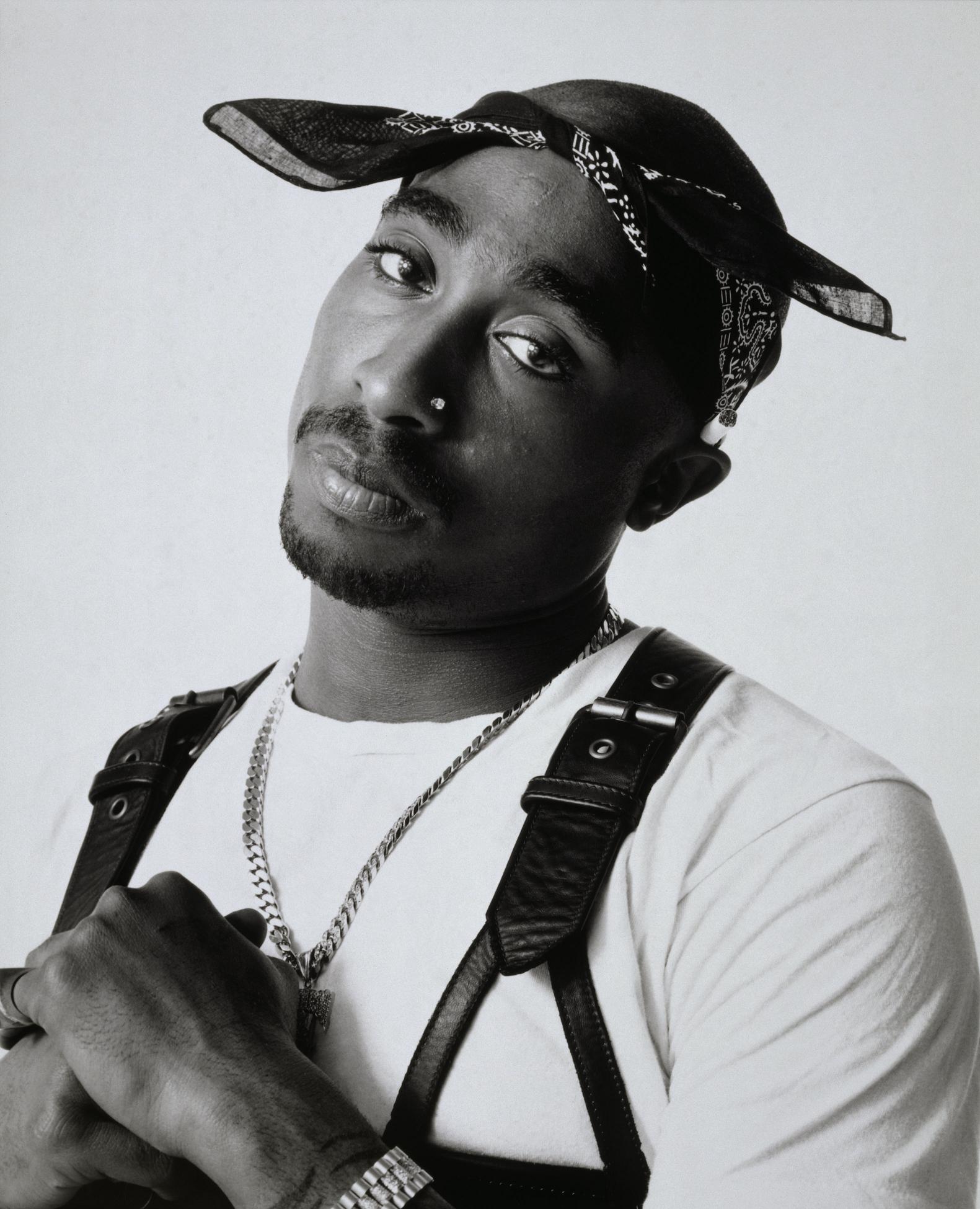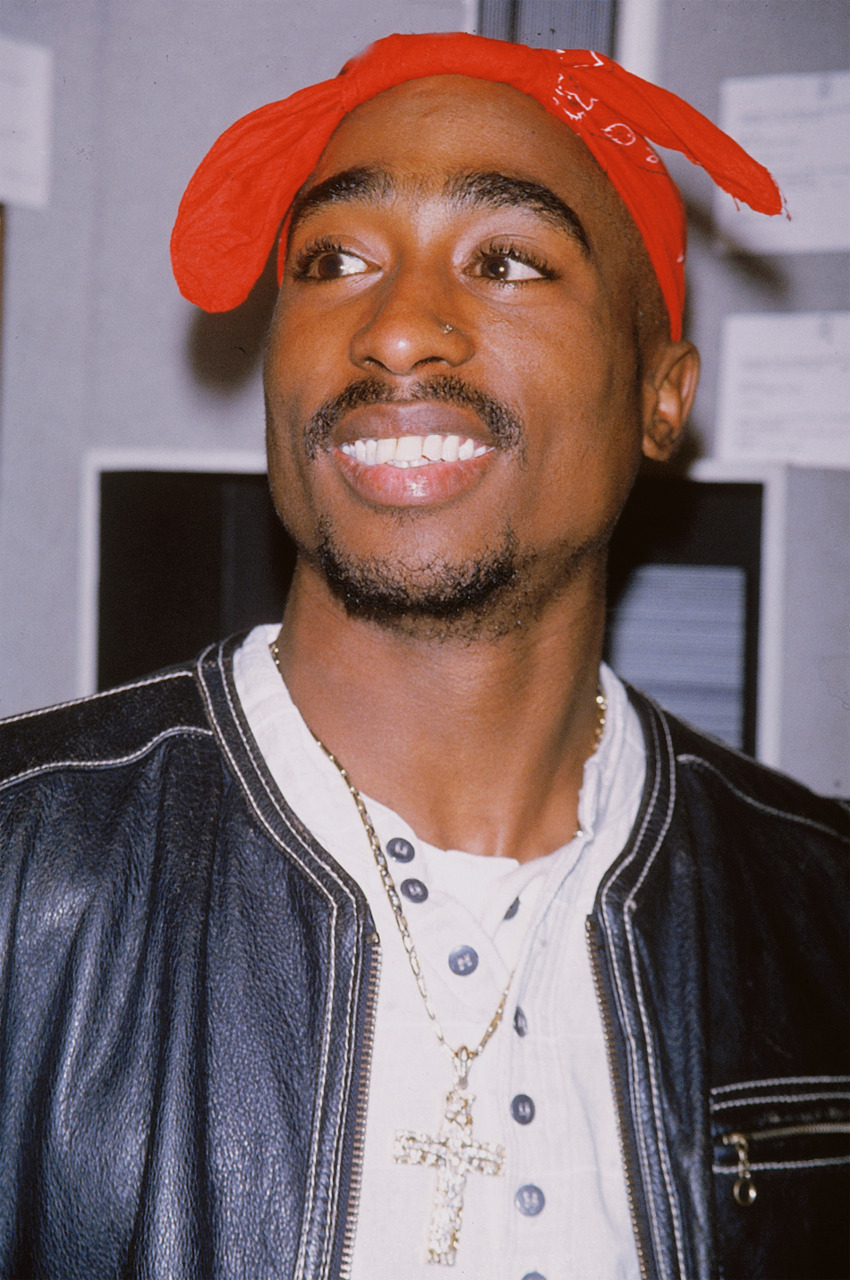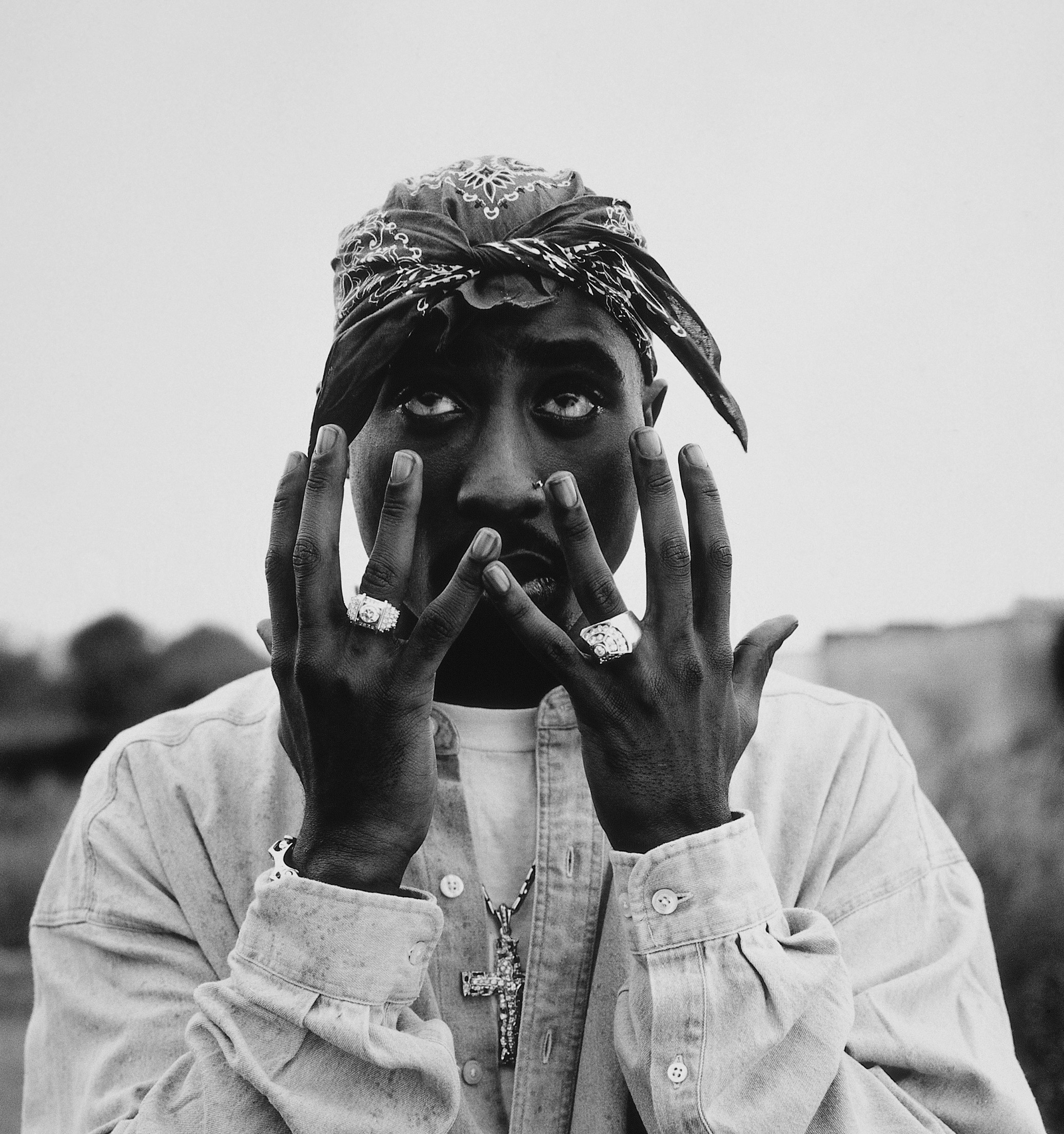There's a piece of music history that often sparks conversations, a visual element connected to a legendary figure in music that many people have heard whispers about. It’s a story that involves a particular album cover, one that was meant for a posthumous release by a truly impactful artist, and it features a surprising portrayal of another very well-known music personality. This visual, a kind of artistic snapshot, was originally intended to accompany a significant record, yet it never really saw the light of day in its first form, so it’s almost like a hidden treasure in the story of music visuals.
This particular piece of art, you see, was crafted for Tupac's *The Don Killuminati: The 7 Day Theory*, an album that, as a matter of fact, still holds a very important spot for many who appreciate music from that time. The imagery in question, which depicts a well-known music mogul in a way that might catch you off guard, became a talking point, even though it wasn't the final version people saw. It is that kind of visual that, in some respects, gets people wondering about the connections between these two music giants and the way things were in the music world back then.
So, we’re going to spend some time looking into the details surrounding this interesting album cover, the one that features the Tupac album cover with P Diddy. We’ll look at the creative choices made by the artist who brought it to life, the background story behind why it was made, and then, too, the lasting mark it left on people's thoughts and discussions, even if it was just for a short time before being changed. We will, of course, keep our focus on the information that has been shared about this particular piece of art and its place in the history of music visuals.
- Unpacking the Tupac Album Cover with P Diddy
- Tupac Shakur - A Look at the Artist
- P Diddy - His Story and Influence
- What Was the Original Tupac Album Cover with P Diddy Like?
- Why Was the Tupac Album Cover with P Diddy Removed?
- How Did the Tupac Album Cover with P Diddy Affect Culture?
- The Makaveli Album and the Tupac Album Cover with P Diddy
- What Lasting Conversations Surround the Tupac Album Cover with P Diddy?
Tupac Shakur - A Look at the Artist
Tupac Shakur, a figure whose presence in music and culture remains very strong, had a life that, you know, was cut short but left behind a body of work that continues to speak to many. He was a person who used his words to paint pictures of life, to express feelings, and to share observations about the world around him. His music, often filled with stories and deep thoughts, connected with a large audience, and it still does, actually. He was, in a way, a storyteller for his time, and his voice carried a lot of weight.
His work went beyond just making songs; it often touched on things that were happening in society, things that mattered to people. He had a knack for putting words together in a way that felt real and direct, and that, in fact, is part of why his creative output continues to be studied and appreciated. The way he put his thoughts into words, whether through his songs or other forms of expression, really made an impression on people. He was a person who, for many, stood for something more than just music.
Tupac’s personal journey and his creative output are often looked at together, as they both tell a story of a person who lived with passion and conviction. His albums, like *The Don Killuminati*, which was released after his passing, are seen as significant contributions to music. These works, you know, continue to be listened to and discussed, showing just how much of an effect he had on the music scene and beyond. His memory, in short, lives on through the art he created and the discussions it inspires.
Here’s a brief look at some general details about Tupac Shakur:
| Full Name | Tupac Amaru Shakur |
| Also Known As | 2Pac, Makaveli |
| Birth Year | 1971 |
| Death Year | 1996 |
| Occupations | Rapper, Actor, Poet |
| Notable Albums | *All Eyez on Me*, *Me Against the World*, *The Don Killuminati: The 7 Day Theory* |
P Diddy - His Story and Influence
Sean Combs, known by many names over the years, including Puff Daddy and P Diddy, is another figure whose presence has been quite notable in the music world. He’s someone who has been involved in many different parts of the music business, not just as a performer but also as a person who helps shape the careers of others and build music companies. His work has, in fact, played a part in how music sounds and is presented to the public, particularly during the 1990s and beyond.
His influence, it's almost like, goes beyond just the music itself; it extends to how artists are seen, how they present themselves, and even the kinds of sounds that become popular. He’s been a person who has helped bring many artists to the forefront, and his own creative projects have often been met with a lot of attention. He has, in a way, been a key player in defining certain sounds and styles that became popular in different periods of music. His journey shows a person who has worn many hats in the music industry.
The connection between P Diddy and Tupac, while sometimes seen as complicated, is rooted in events that, you know, really helped shape both their individual paths and the broader music industry at that time. These connections, whether through shared experiences or moments of conflict, are often discussed when looking back at that period. His story, in short, is very much a part of the larger story of music from that time, especially in the world of hip-hop and popular culture. He’s a person whose name often comes up when talking about the significant figures of that era.
What Was the Original Tupac Album Cover with P Diddy Like?
The original artwork for Tupac's posthumous album, *The Don Killuminati: The 7 Day Theory*, held a particular image that, you know, has become a point of much discussion. This piece, which was created by an artist named Ronald "Riskie" Brent, featured a depiction that really stood out. It showed an illustration of someone who looked very much like P Diddy, and what made it particularly memorable was that this figure was dressed in tights, resembling the outfit a ballerina might wear. It was, frankly, a rather striking visual choice for a music album cover.
This image, which was meant for the back cover of the album, was part of a larger visual story that the artist was trying to tell. It was, in a way, a representation that aimed to convey a specific message or feeling, perhaps even a commentary on certain aspects of the music scene at the time. The idea of featuring P Diddy in such a distinctive manner, especially on a Tupac album cover with P Diddy, certainly caught people's attention, and it has remained a topic of interest for many years since. It gives you a sense of the creative freedom artists sometimes took with their visuals.
Beyond the illustration of P Diddy, this previously unseen album artwork also included an animated image of something else, though the specific details of that element are not as widely discussed as the P Diddy portrayal. The overall design, including the image of P Diddy in a ballerina-like outfit, was quite different from what people typically expected from music album art, especially for an artist like Tupac. It was, you know, a bold choice that, in some respects, aimed to make a strong visual statement about the music and the surrounding circumstances.
Why Was the Tupac Album Cover with P Diddy Removed?
The decision to remove or "scrap" the original back cover art for *The Don Killuminati: The 7 Day Theory* happened once Tupac passed away. This change meant that the public never saw this particular visual, the one featuring the Tupac album cover with P Diddy, on the final released version of the album. It’s a detail that, as a matter of fact, has led to a lot of speculation and discussion among fans and those interested in music history. The reasons for such a significant alteration are often tied to the sudden and tragic events surrounding Tupac’s passing.
One of the main points of discussion around why this specific image was taken off the album has to do with rumors that were circulating at the time. The back cover, which Ronald Riskie Brent also created, was seen by some as hinting at certain unconfirmed stories about P Diddy. Specifically, it was thought to be, you know, insinuating a long-standing rumor that suggested P Diddy had certain personal tendencies that some people considered to be gay. This kind of suggestion, especially in the context of the music industry at that time, could be quite sensitive.
Amidst the chatter and talk surrounding these allegations, social media users have, more recently, brought up the original cover art for Tupac's Makaveli album. This renewed interest shows that even after all these years, the initial design, including the Tupac album cover with P Diddy, continues to be a subject of curiosity and analysis. The fact that it was removed, arguably, only added to its mysterious appeal, making people wonder even more about the story behind it and the impact it might have had if it had been released as originally planned.
How Did the Tupac Album Cover with P Diddy Affect Culture?
Even though the original Tupac album cover with P Diddy wasn't widely released, its influence, or rather, the discussions it sparked, certainly extended beyond just the world of music. Images, you see, can speak volumes, and this particular piece of art, even in its unreleased form, became a striking representation of certain tensions and relationships within the music community of that time. It was a visual that, in some respects, captured the essence of the 1990s, a period marked by intense rivalries and strong personalities in the music scene.
This cover, or at least the knowledge of its existence and content, reflects the very heart of the 1990s, a time when music, particularly certain genres, was becoming a truly powerful force in popular culture. It was an era where artists' images and the stories around them were just as important as the sounds they created. The kind of visual commentary found on this particular album art, even if it was eventually changed, shows how deeply intertwined personal stories and public perception were in shaping the narrative around music figures during that time. It was, in a way, a very telling piece of art for that period.
Among the many noteworthy visuals that came out of that era, the Tupac album cover featuring P Diddy stands out as a piece of art that embodies the culture and energy of the 1990s. It represents, you know, the bold and sometimes controversial statements that artists and their teams were willing to make through their album art. Its story, even in its unreleased state, shows how deeply images can become embedded in public consciousness, affecting not just music discussions but also broader conversations about fashion, art, and what was happening in popular culture at large. It truly was a significant piece, even if it remained mostly unseen.
The Makaveli Album and the Tupac Album Cover with P Diddy
The album in question, *The Don Killuminati: The 7 Day Theory*, was originally going to be called "The 3 Day." This detail about the original title is, you know, an interesting piece of information when we consider the context of the album’s creation and its eventual release. The change in title, along with the alteration of the album art, points to a period of flux and reconsideration following Tupac’s passing. It suggests that there were many decisions being made about how to present his final works to the world.
Tupac’s Makaveli album back cover is, as a matter of fact, often brought up in discussions because it was seen as hinting at a rumor that had been circulating for years about P Diddy's personal life. This rumor suggested that Diddy had certain gay tendencies. The artwork, particularly the illustration by Ronald Riskie Brent, was interpreted by some as a visual representation of this unconfirmed talk. It’s a point that, you know, has fueled a lot of conversation and debate among fans and those who follow the history of these artists.
On the cover created by Ronald Riskie Brent, there were other figures pictured as well, including The Notorious B.I.G. and Dr. Dre, alongside Puff Daddy. The inclusion of these figures, and the specific way Puff Daddy was shown, made the Tupac album cover with P Diddy a very provocative piece of art for its time. It was a visual statement that, arguably, aimed to address or comment on the relationships and rivalries that were a significant part of the music scene in the 1990s. The entire piece, in short, was loaded with meaning for those who understood the context.
What Lasting Conversations Surround the Tupac Album Cover with P Diddy?
The conversations around the Tupac album cover with P Diddy have continued for many years, showing just how much impact a piece of art, even one that was largely unseen, can have. People still talk about the specifics of the illustration, particularly the way P Diddy was shown. It’s a topic that, you know, often comes up when discussing the history of these two significant figures in music, and it highlights the ongoing interest in the stories and rumors that surrounded them during their active years.
One of the more interesting parts of this ongoing conversation is the detail about P Diddy's nickname. When Tupac created the artwork and the associated material, nobody in the music industry was calling Puff "Diddy." He actually started to use that nickname, which Biggie gave him, in 2001. This means that Tupac's artwork, which depicted "P Diddy" in a certain way, was created before the name "Diddy" was even widely adopted by the artist himself. This fact, you see, adds another layer of intrigue to the story of the album cover and the specific timing of its creation versus the public’s knowledge of the name.
The first time that the name Diddy was really brought into public awareness was later, after the time the album art was made. This discrepancy in timing, frankly, makes people wonder about the intention behind the artwork and how it might have been interpreted differently if the nickname had been commonly known at the time of its creation. The discussion about the Tupac album cover with P Diddy, therefore, often touches on these kinds of historical nuances, looking at the artwork not just as a visual but as a piece of a larger, evolving narrative. It’s a really complex piece of the puzzle, in some respects.
People like Poro and Batty Billz have, as a matter of fact, talked about Tupac’s original album cover for Makaveli, showing that the topic remains relevant in various discussions about music history. These conversations often delve into the broader context of the relationship between P Diddy and Tupac, which, while complex, is deeply rooted in events that shaped their individual careers and the music industry as a whole. The story of this album cover, in short, is a reminder of how intertwined personal lives, artistic expression, and public perception can become in the world of music.
This article has explored the initial artwork, the reasons for its change, and the ongoing talk surrounding the Tupac album cover with P Diddy, including the personal details of Tupac and P Diddy, the nature of the original art, why it was scrapped, its cultural echoes, and its connection to the Makaveli album.



Author Details:
- Name : Woodrow Bins
- Username : mante.layla
- Email : lester41@wehner.com
- Birthdate : 1980-08-05
- Address : 14124 Simonis Extensions East Kamronbury, OR 83353
- Phone : 308-686-5173
- Company : Donnelly Group
- Job : Secretary
- Bio : Deleniti debitis voluptatem cum vero. In numquam ducimus voluptates ut possimus architecto. Illum odio est aut saepe consequatur ut et. Nihil magni voluptatum debitis vitae.
Social Media
Facebook:
- url : https://facebook.com/jrunte
- username : jrunte
- bio : Omnis ut occaecati quod ut nesciunt hic. Minus inventore tempore ullam fuga.
- followers : 3433
- following : 2545
Linkedin:
- url : https://linkedin.com/in/javonterunte
- username : javonterunte
- bio : Et dolorem esse ut illo et.
- followers : 5093
- following : 626
